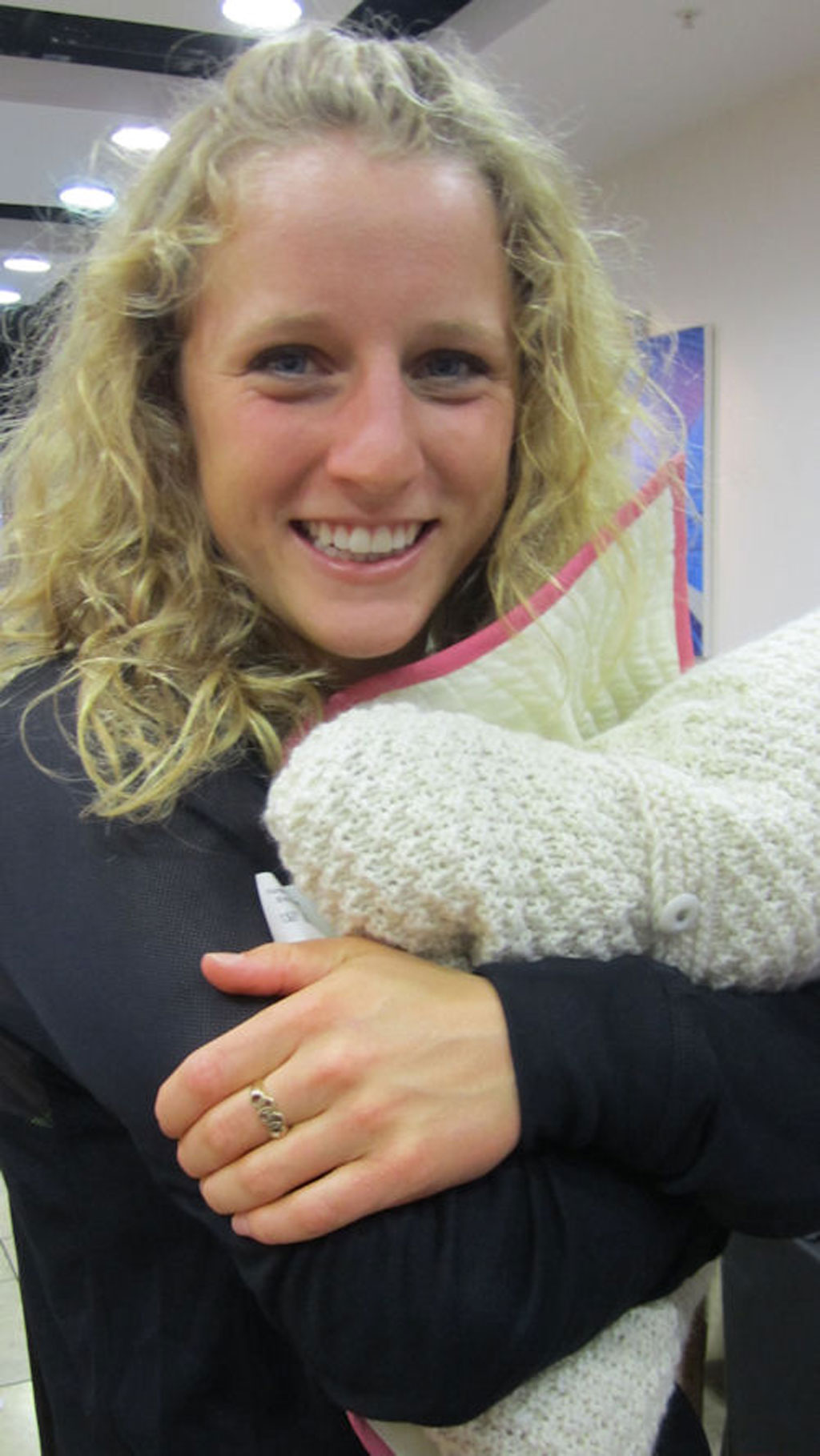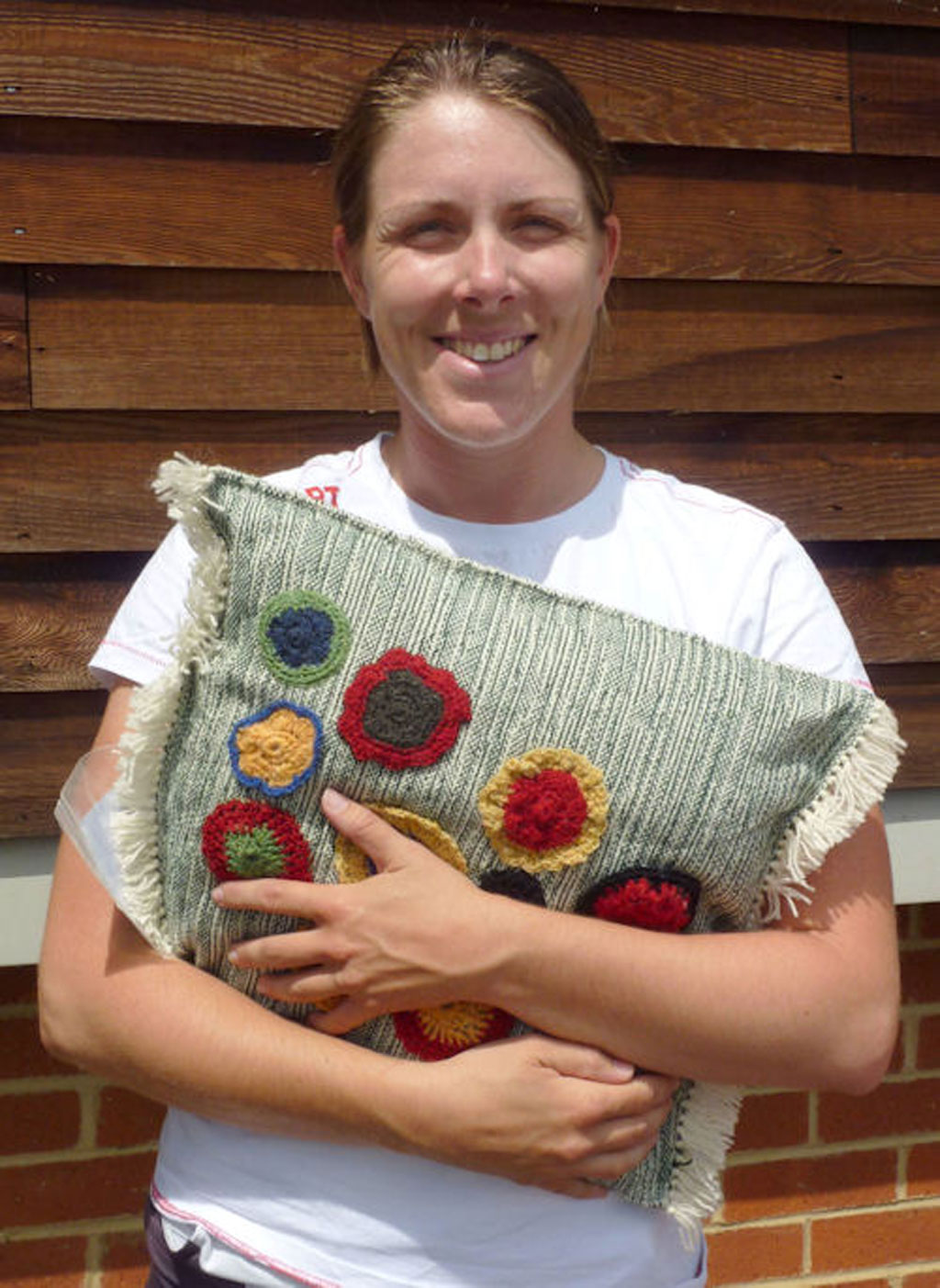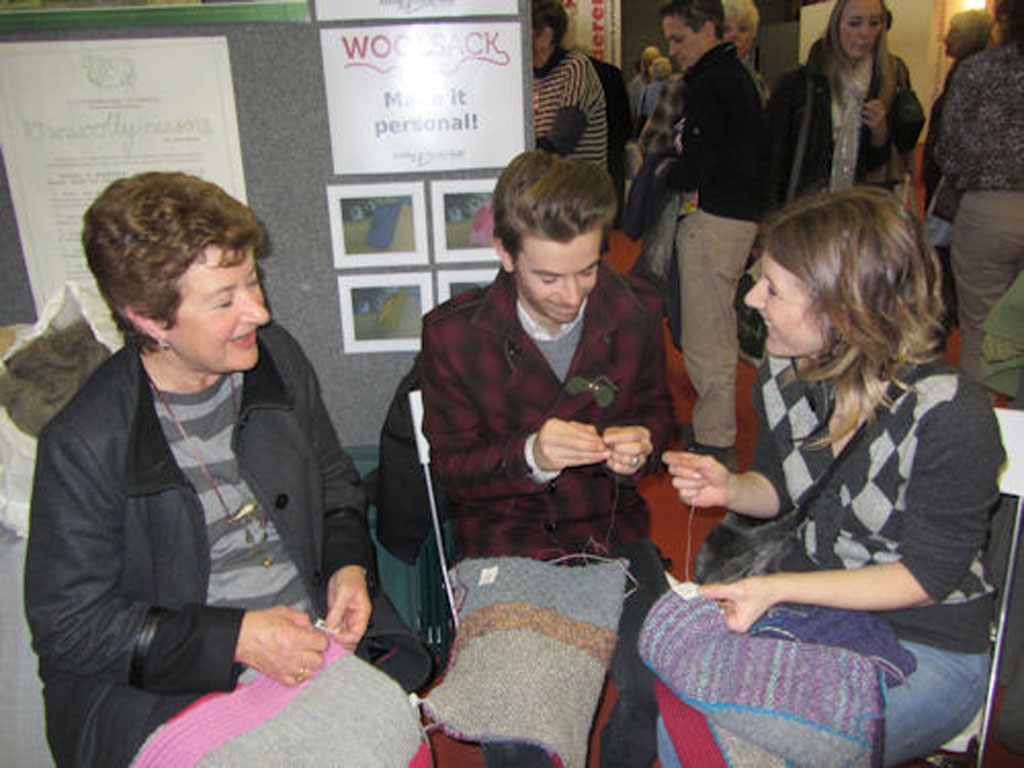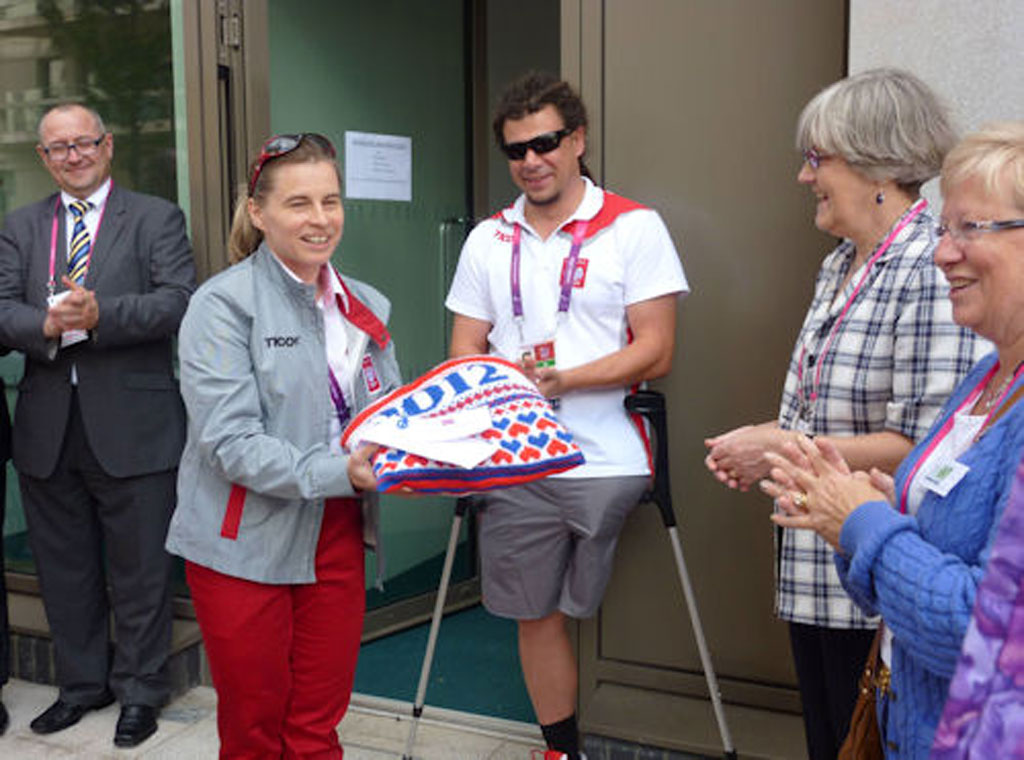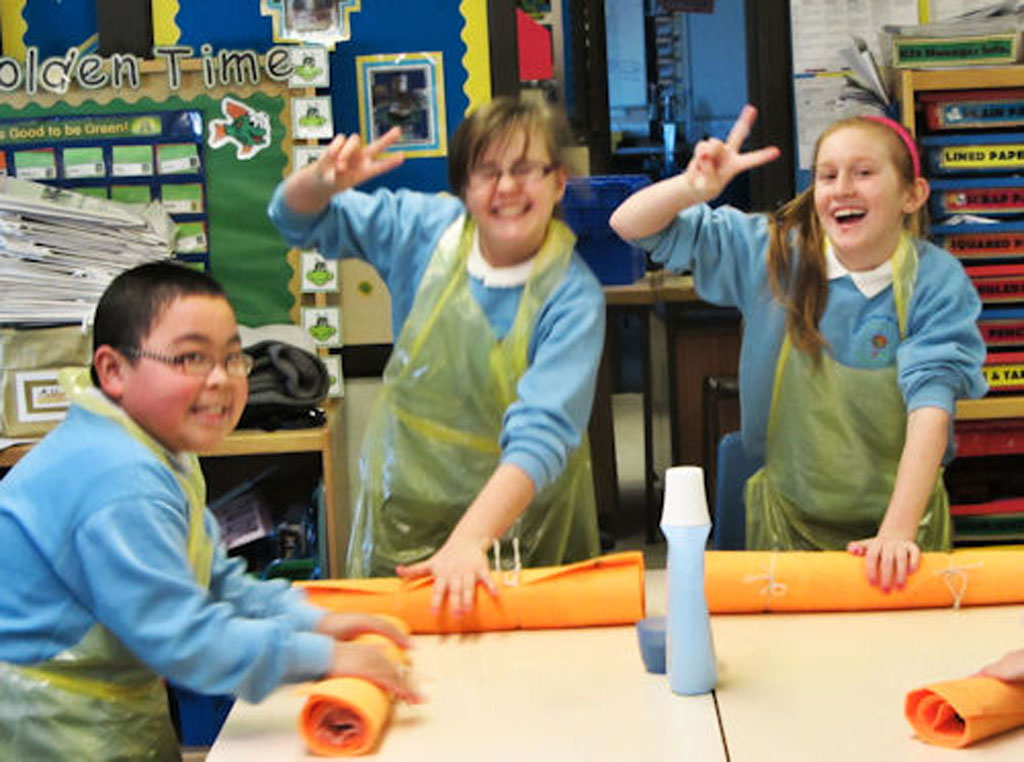We thought we would continue on from this morning’s WOOLFEST post with a piece about another hugely important cultural project involving British Wool – WOOLSACK! Woolsack was established so that Athletes competing in The Olympic and Paralympic Games could take a handmade cushion away with them as a personal welcome gift from the UK. Makers all over the UK united in the activity of cushion-making towards this end, and anyone who has been following the project will have been totally inspired by the creativity and generosity of these makers; the deep appreciation for their handiwork expressed by the Athletes who received cushions; and the determination to get cushions to Athletes that prevailed even when LOCOG turned this into a logistical nightmare by deciding at the eleventh hour not to give Woolsack a distribution centre inside the Olympic Village as originally promised! Last year – before some of these things had come to pass – WOVEMBER reported on the project, quoting from a (then) recent press-release…
People of all ages and backgrounds, individually or in school, WI, and craft groups across the UK are already busy making up to 14,000 cushions from British wool to be given as personal welcome gifts to the athletes competing in the London 2012 Olympic and Paralympic Games.
Athletes who may be competing in the London 2012 games have already seen sample cushions. Their comments show how much they appreciate the personal nature of this gift handmade entirely from a British grown product. Sue Blacker said, “This gift really is a little bit of Britain to take home with them, while reflecting the importance of wool in England’s history.”
The project enables everyone including carers, the disabled and those with challenges in their life to have a personal connection to the 2012 Games through making a Woolsack cushion.
Moving messages on the cushion labels show how much the makers appreciate the opportunity to have a personal involvement with the 2012 Games. Anyone of any age can contribute towards making a cushion. Several schools in the north of England are learning new skills to enable them to make cushions from British wool, with some donated by local farmers.
…Woolsack Press Release, November 2011
A year on from this point, the Olympic and Paralympic Games have been and gone… but thanks to many incredibly hard-working knitters, weavers, organisers, sewers, makers and cushion-stuffers, the vision in that press release from a year ago has been realised. Athletes from many different nations have indeed taken away beautiful, hand made, personal gifts made of wool grown in this country and fashioned into cushions in its schools, community centres, fibre festivals and knitting circles. The effort required to collect, stuff and distribute those cushions was enormous, and although Woolsack was originally Sue Blacker’s idea, a huge quantity of the work involved with realising Woolsack was also undertaken by Jane Cooper. We thought you might therefore enjoy hearing her words on the project, which she has kindly supplied for WOVEMBER readers, along with some fantastic photos…
THE WOOLSACK HUG
The 2012 Olympic and Paralympic Games introduced a new phrase to the thousands of people involved with the Woolsack Project: The Woolsack Hug.
US Diver hugging her Woolsack cushion
It’s what happens when you give to an Olympian or Paralympian a hand crafted cushion made entirely of British wool, including a personal message from the maker. They hug their cushions, hugging the love and good wishes sent with them, and naturally experiencing the appealing tactility of wool.
GB Rower hugging her Woolsack cushion
The project was conceived by Sue Blacker well over two years ago and I became involved in September 2010. It was part of the Cultural Olympiad. As those who have been involved with the project or saw us on television, radio and the in national press will know, along with success and elation has come frustration and incredibly hard work.
It’s changed my life but I have no regrets. I’ve had the opportunity to be involved in a ‘once in a lifetime’ experience and to help make a real difference in some people’s experience of the 2012 Games.
Wetherby Library staff, stuffing Woolsack cushions
We wanted to give the athletes a personal gift that was a little bit of Britain to take home with them. Wool produced by British sheep is uniquely that. Within each cushion was a chain starting in Britain’s countryside with the sheep that shape so much of it, through the farmers, wool processors, spinners, dyers, stockists and then to people of all backgrounds and ages, throughout the UK. The chain then continued with Team Woolsack – a group of amazing people who made the project work.
Finally the chain ended with the elite athletes – a group of people that I’d totally underestimated. These athletes were preparing for the culmination of years of work and sacrifice and yet they were making time to contact us to request their cushions.
Polish Paralympic Team in the Olympic Village, receiving Woolsack cushions
Their responses showed that they fully appreciated the skill and work behind each cushion and that their 2012 experience wouldn’t have been the same without their cushions with the personal messages from the makers. We even had requests for teams to meet the makers!
The 2012 Games was to “Inspire a Generation”. Woolsack – with makers of all ages from under 5 years to 105 years – inspired FIVE generations. The messages I received from so many makers inspired me and kept me going through the challenges and frustrations; they said being part of Woolsack helped them to feel a personal connection to the 2012 Games and to the athletes.
Making felt for Woolsack cushions
The Games are over now and all the British wool cushions are scattered around the world with their appreciative recipients. But the legacy remains in the chain that started with sheep grazing on hills and fields throughout the UK, finished with the Woolsack Hug, and created memories that will last a lifetime.
– Jane Cooper
The Woolsack website has been archived by the British Library and National Archives. You can see the photographs and read the story and comments at www.woolsack.org/2012. All content in this post © Jane Cooper and Woolsack, and used with kind permission
